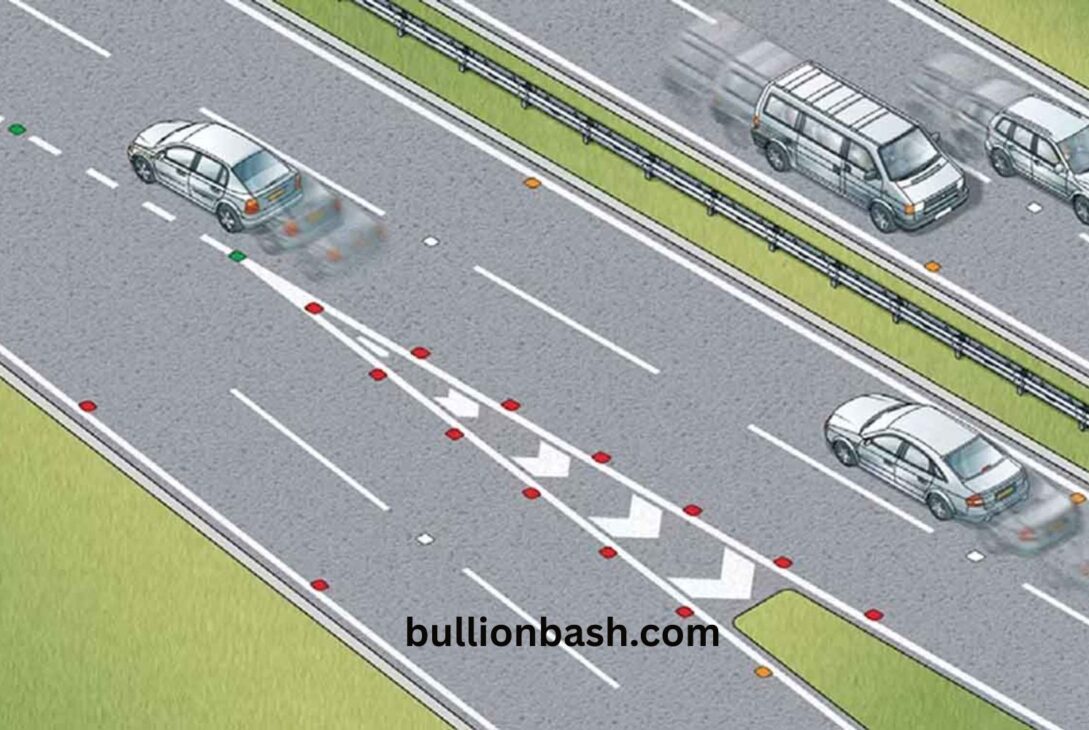Introduction
If you’ve ever driven at night, you might have noticed small reflective markers glinting under your headlights. These are reflective amber studs, a crucial part of motorway safety. They guide drivers, mark lanes, and help prevent accidents, especially in low-light conditions. In this guide, we’ll explain what they are, why they’re used, and exactly where you can find them on a motorway.
What Are Reflective Amber Studs?
Reflective amber studs are small road markers embedded into the road surface.
- Composition: Usually made of durable plastic, ceramic, or metal, with a reflective coating.
- Purpose: Reflect headlights to indicate lane boundaries and road edges.
- Color coding: Amber indicates the left-hand edge of the carriageway or areas where caution is needed. Other colors like white, red, or green have different functions.
They are sometimes called cat’s eyes or road studs, and they’ve been a staple of road safety for decades.
Why Are Amber Studs Used on Motorways?
Amber studs aren’t just decorative—they serve very practical purposes:
- Night-time visibility: Reflective surfaces make lane markings visible even in darkness.
- Lane separation: They help drivers stay in their lane, especially on long, monotonous stretches of road.
- Accident prevention: Studies show reflective studs reduce lane departure accidents by giving clear visual cues.
Without these markers, driving in heavy rain, fog, or at night could become significantly more dangerous.
Where Are Reflective Amber Studs Typically Placed?
Knowing where amber studs are installed is key to understanding their function:
- Lane edges: Amber studs mark the left-hand edge of the motorway carriageway.
- Slip roads and exits: Often placed at junctions, ramps, and merge lanes to guide traffic safely.
- Central reservations (in some regions): Highlight barriers or medians where caution is needed.
- Hazardous areas: Sharp curves, accident-prone zones, or areas with frequent lane changes.
Tip: Their placement may vary slightly by country, depending on local road authority standards.
How to Identify Them While Driving
Reflective amber studs are easy to spot if you know what to look for:
- Visual cues: Glint in your headlights at night; amber color indicates caution.
- Distance: Usually spaced at intervals of 10–15 meters on straight roads, closer on curves.
- Daytime vs. Nighttime: Less visible during the day but still noticeable against dark asphalt.
They are designed to be subtle but effective—enhancing safety without being distracting.
Installation and Maintenance
Reflective amber studs are installed and maintained by road authorities:
- Installation: A special adhesive or epoxy is used to fix them in the road surface. Some studs are mechanical and bolt into place.
- Maintenance: Periodic checks ensure studs are not broken, worn, or dislodged.
- DIY advice: Never attempt to move or remove studs—they are legally part of road infrastructure and moving them can be dangerous.
FAQs About Amber Studs on Motorways
Can they be seen in heavy rain or fog?
Yes, reflective coatings are designed to work even in poor weather conditions.
Are they mandatory on all motorways?
In many countries, yes—especially on high-speed roads and hazard-prone sections.
Do different countries use different colors?
Yes. Amber is standard in many places for the left-hand edge, but red, white, and green are used for other purposes.
Do they require maintenance?
Yes. Broken or worn studs are replaced to maintain visibility and safety.
See Also: Angel Fangs Piercing: Pain, Healing & Style Guide
Conclusion
Reflective amber studs on a motorway are essential safety features, guiding drivers and reducing accidents. You’ll typically find them on lane edges, slip roads, junctions, and other areas needing caution. By understanding their purpose and placement, drivers can navigate safely, especially at night or in poor visibility conditions. Always respect their placement—they’re there for your protection.


